These Hacks to Improve Your Soil for Free will guide you to create the most powerful and rich soil for your plants!

A rich and quality growing medium can make gardening easy, productive, and fun without spending much on chemical fertilizers and soil conditioners.
Determine the Condition of the Soil
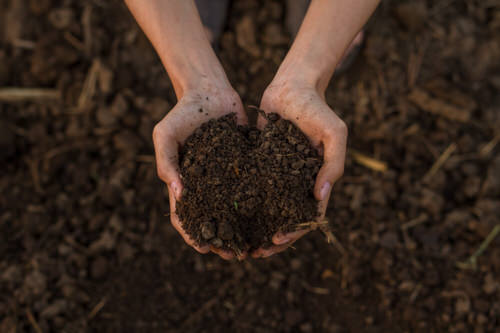
Before you think of improving your soil, test it for what it has. Mostly, a basic test checks for Phosphorous, Nitrogen, Potassium, and pH. In addition to this, a soil test report can also tell you about the levels of Magnesium, Calcium, and Sulfur in your soil, which can also be necessary for plant growth.
There are many DIY soil tests you can perform at home. The most basic test anyone can do to understand the texture is the squeeze test. Take a handful of moist garden soil, squeeze it to make a ball, and open your hand. If it holds the shape until you do a light poke, it is loamy, which is excellent! Watch out for these signs that show your soil is bad and you should amend it.
1. Check and Control Soil pH
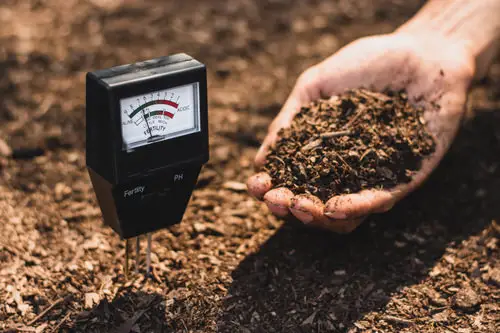
Soil pH tells you how alkaline, acidic, or neutral your garden soil is. Different plants require different pH levels to grow to their fullest potential. For instance, the best range for potatoes is 6 to 6.5, while the ideal pH for lavender is 6.5 to 8. Here’s how you can check the soil pH at home.
What to Do if the Soil is Too Acidic?
Too acidic soil means the pH level is below 7. If you need to raise the pH value, you can use any lime product to enhance the soil’s growing requirements. For example, you can mix a tablespoon of baking soda into a gallon of water and use it to reduce the soil’s acidity naturally to make it neutral.
What to Do if the Soil is Too Alkaline?
3. Aged Manure
Microbial activity in the growing medium is essential for acquiring, cycling, and releasing nutrients, ensuring the plants get the correct carbon, nitrogen, and phosphorus dose.
Adding manure to the soil is the best way to boost microbial biomass while providing organic carbon and nutrients. This significantly helps to stimulate microbial activity, resulting in better growth and diversity of microbes in the soil. Add it to the garden beds at least once during the growing season to enhance the soil and provide nutrients steadily.
Not all manure is created equal. Manure from herbivores like cows, horses, and sheep is generally considered the best for gardens. Manure from carnivores or omnivores may contain pathogens or weed seeds. If you are unsure about the age or source of manure, it’s best to compost it for at least a few months before adding it to your garden.
4. Green Manure

Green manure plants can be grown as living mulch in the yard. By increasing among themselves, they form a dense mat, thereby saving the plants from soil splash and erosion.
Planting a cover crop in the fall and tilling it under in the spring is a great way to add organic matter and nitrogen to the soil. Some popular green manure crops include clover, buckwheat, and ryegrass. Choose a cover crop that will work well in your climate and planting schedule.
You can also use green leaf manuring, which uses the leaves and twigs of trees and other plants. You also have an option to grow nitrogen-fixing plants like peanuts, cowpeas, soybeans, and fava beans. Nitrogen fixation by legumes is a partnership between a bacterium and a plant. In legumes, bacteria live in small growths on the roots called nodules, which are responsible for nitrogen fixation, and the upcoming plant absorbs the NH3 produced.
5. Spent Hay or Straw
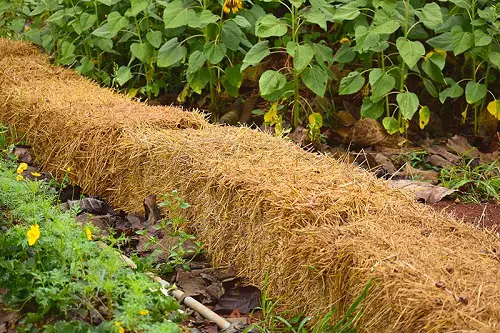
Straw is a by-product derived from dried stalks of cereal plants like barley, rice, oats, and rye. Hay, on the other hand, is a dried grass that includes seed heads, leaf blades, and stalks.
They are both excellent choices to top-dress the growing medium as they make the soil rich in organic matter. They help suppress weeds and decompose quickly, which allows the plant to get a steady supply of nutrients.
Mulching with this will also help insulate the soil and trap moisture in summer, which is really helpful if you live in a warm climate. Both straw and hay are great in creating a microclimate as they make for an organic blanket that protects it from sun and wind.
6. Chopped Grass
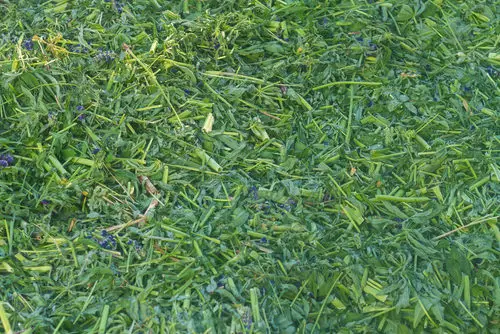
Do not allow cut grass from the lawn to go to waste because it is packed with minerals and provides food to beneficial microbes and earthworms. The leaves help break down heavier, clayey soil and retain moisture in a lighter, loamy soil.
Chopped grass is also a great carbon source (42% – 48%) and gives your compost a solid boost for free.
7. Wood Chips
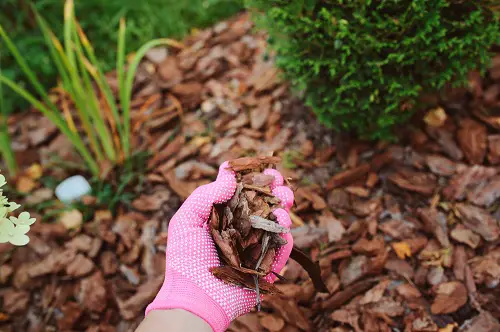
You can also use wood chips as mulch for your garden beds. You can mix that in the growing medium to increase the soil’s porosity and water retention capability. They’re easy to find–they’re available for free via tree services or the green recycling facilities in your locality.
Speaking of garden mulch, pine needles also work well if you’re looking for a quick hack to improve garden soil for free.
8. Kitchen Scraps

The kitchen could be a gold mine as banana peels, eggshells, tea leaves, vegetables, and other fruit scraps can add nutrients to your soil for free. You can also throw some banana or pomegranate scraps into the planting hole at the time of planting or spread some of that on top of the soil in your garden and allow them to decompose naturally.
You can make tons of fertilizers with kitchen scraps and food leftovers to improve your garden soil for free.
9. Coffee Grounds
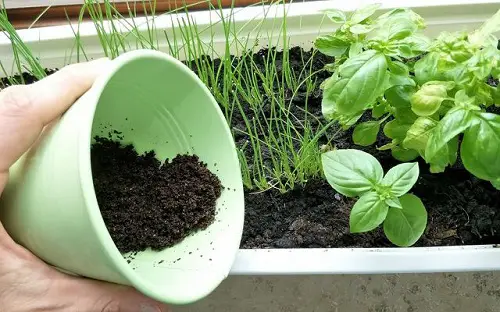
When you mix the spent coffee grounds into the soil or let them compost, it improves the soil structure and also helps to repel some bugs. The grounds are already high in nitrogen and are excellent for plants that are heavy feeders in the garden.
You can add the coffee grounds to leaf mold and make an excellent, nutritious mulch for your garden for free. But this isn’t the only use of coffee grounds; find more here.
10. Wood Ash
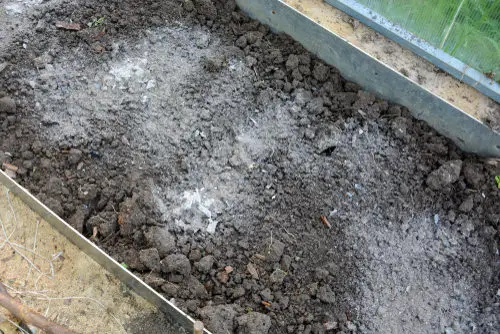
Wood ash is a natural source of calcium, potassium, and other helpful minerals that trees store in the soil. It can be a great way to boost these nutrients in your garden. However, wood ash is also high in lime, which raises the pH of your soil. This can be helpful if your soil is too acidic, but it’s unsuitable for plants that prefer acidic soil, like blueberries, azaleas, and rhododendrons.
As a bonus, wood ash may also help deter pests like slugs, snails, aphids, and mealybugs! Just be sure to use it sparingly and only on plants that enjoy slightly alkaline soil. Here’s everything about using wood ash in the garden.
11. Worm Castings
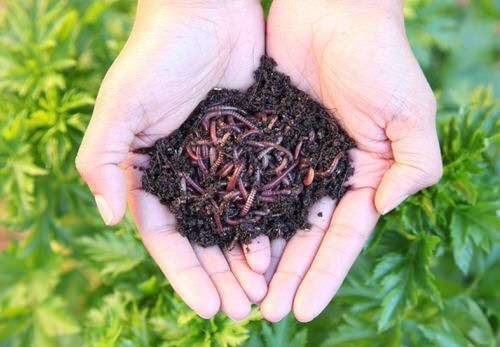
Ever heard of worm castings? They might sound strange, but they’re worm poop! Don’t be grossed out because worm castings are a fantastic natural fertilizer for your plants and a great hack to improve your garden soil for free.
Packed with nutrients like nitrogen, phosphorus, and potassium, worm castings give your plants a healthy boost. They’re gentle on plants because they have a neutral pH and help improve soil drainage and air circulation. So, consider worm castings next time you want to give your plants a little extra love!
12. Leaf Mold
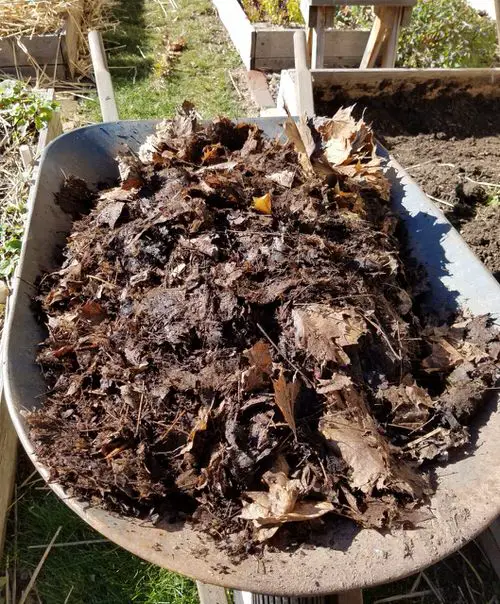
Also known as black gold, leaf mold is made from composted leaves. It goes through a slow process, but it is really worth it because it is an excellent soil additive. All you have to do is collect all the leaves in the garden and dampen them.
Keep adding leaves; it will be ready to use in 1-2 years. Here’s one tutorial video for help. Once made, mix it thoroughly in your soil!
13. Covering the Soil in Winter
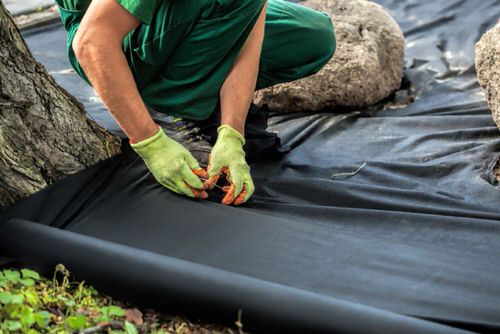
Winter can be harsh on your garden soil. Before heavy rain or winter sets in, cover the beds with old clothes, burlap, or even plastic wrap to prevent them from becoming compacted and waterlogged.
This simple hack to improve garden soil for cheap helps keep the soil loose and aerated, saving you time breaking it up come spring planting season! For the same reasons, remember to cover your open compost pile.
14. Solarize the Soil
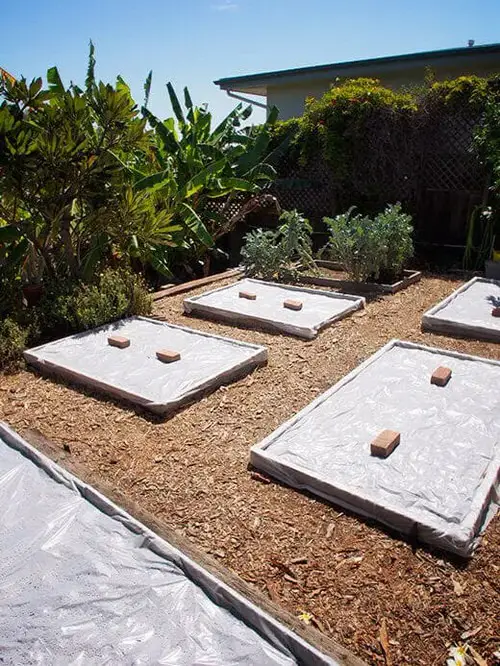
Solarizing the soil is when you prepare the garden bed to grow plants of your choice by removing all the weeds and other unwanted plants.
First, clear the area of any weeds or plants. Then, give the soil a good soak. The next step is key–cover the bed tightly with clear plastic sheeting. This traps the sun’s heat, cooking the top layer of soil and eliminating unwanted pests, weed seeds, and even some diseases.
After 6-8 weeks under the plastic blanket, you’ll have a clean, pest-free bed ready to plant your favorite flowers or veggies!
15. Urine

As funny or weird as it sounds, human urine is sterile and one of the best sources of amendment and fertilizer for soil. It is super rich in nitrogen and contains potassium, phosphorous, and other trace nutrients.
While it can be a nitrogen source, it’s best to dilute it heavily (10:1 water to urine ratio) to avoid burning plants. Check local regulations, as urine use in gardens may not be recommended in some areas.
16. Biochar

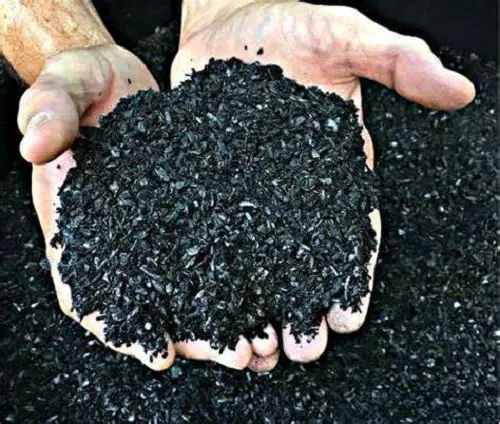
This charcoal-like substance can be a valuable addition to your soil improvement strategy. Biochar is created by heating organic materials like wood chips or crop residues in an oxygen-limited environment.
Biochar has a highly porous structure that improves soil drainage and aeration. It also acts like a sponge, holding onto nutrients and water in the soil, making them more available to plants. Additionally, biochar can help suppress some soilborne diseases and improve soil fertility.
Biochar might require some initial investment, but it’s a long-lasting hack to improve your garden soil for free, and for years to come.
So, which of these soil hacks do you like? Are you going to try one of these? Do let us know how it went for you in the comments!


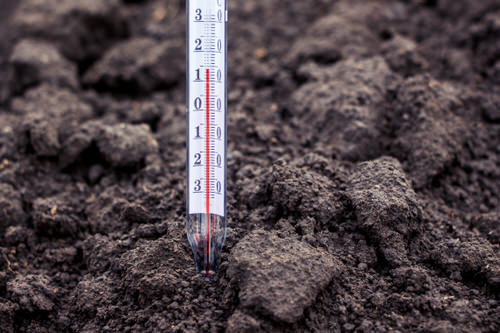

I like hearing about the vinegar uses. I never knew vinegar could help in the garden and so many other areas around the house.